
Sir Edmund Andros was an English colonial administrator in British America. He was the governor of the Dominion of New England during most of its three-year existence. At other times, Andros served as governor of the provinces of New York, East and West Jersey, Virginia, and Maryland.

Brunswick is a town in Cumberland County, Maine, United States. The population was 21,756 at the 2020 United States Census. Part of the Portland-South Portland-Biddeford metropolitan area, Brunswick is home to Bowdoin College, the Bowdoin International Music Festival, the Bowdoin College Museum of Art, the Peary–MacMillan Arctic Museum, and the Maine State Music Theatre. It was formerly home to the U.S. Naval Air Station Brunswick, which was permanently closed on May 31, 2011, and has since been partially released to redevelopment as "Brunswick Landing".

Ipswich is a coastal town in Essex County, Massachusetts, United States. The population was 13,785 at the 2020 census. Home to Willowdale State Forest and Sandy Point State Reservation, Ipswich includes the southern part of Plum Island. A residential community with a vibrant tourism industry, the town is famous for its clams, celebrated annually at the Ipswich Chowderfest, and for Crane Beach, a barrier beach near the Crane estate. Ipswich was incorporated as a town in 1634.
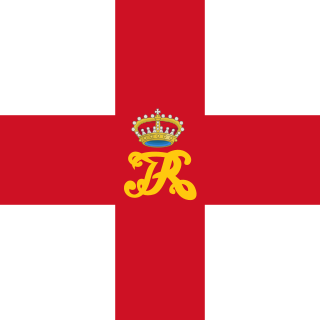
The Dominion of New England in America (1686–1689) was an administrative union of English colonies covering all of New England and the Mid-Atlantic Colonies, with the exception of the Delaware Colony and the Province of Pennsylvania. The region's political structure was one of centralized control similar to the model used by the Spanish monarchy under the Viceroyalty of New Spain. The dominion was unacceptable to most colonists because they deeply resented being stripped of their rights and having their colonial charters revoked. Governor Edmund Andros tried to make legal and structural changes, but most of these were undone and the Dominion was overthrown as soon as word was received that King James II had left the throne in England. One notable change was the forced introduction of the Church of England into Massachusetts, whose Puritan leaders had previously refused to allow it any sort of foothold.
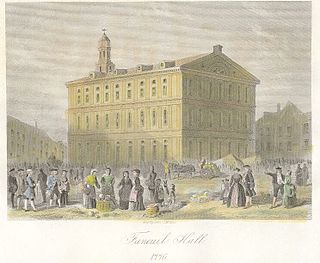
The Ancient and Honorable Artillery Company of Massachusetts is the oldest chartered military organization in North America and the third oldest chartered military organization in the world. Its charter was granted in March 1638 by the Great and General Court of Massachusetts Bay and signed by Governor John Winthrop as a volunteer militia company to train officers enrolled in the local militia companies across Massachusetts. With the professionalization of the US Military preceding World War I including the creation of the National Guard of the United States and the federalization of officer training, the company's mission changed to a supportive role in preserving the historic and patriotic traditions of Boston, Massachusetts, and the Nation. Today the Company serves as Honor Guard to the Governor of Massachusetts who is also its Commander in Chief. The headquarters is located on the 4th floor of Faneuil Hall and consists of an armory, library, offices, quartermaster department, commissary, and military museum with free admission.

The Sacred Cod is a four-foot-eleven-inch (150 cm) carved-wood effigy of an Atlantic codfish, "painted to the life", hanging in the House of Representatives chamber of Boston's Massachusetts State House—"a memorial of the importance of the Cod-Fishery to the welfare of this Commonwealth" (i.e. Massachusetts, of which cod is officially the "historic and continuing symbol"). The Sacred Cod has gone through as many as three incarnations over three centuries: the first (if it really existed—the authoritative source calling it a "prehistoric creature of tradition") was lost in a 1747 fire; the second disappeared during the American Revolution; and the third, installed in 1784, is the one seen in the House chamber today.
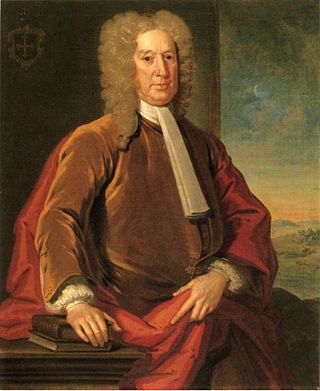
John Nelson (1654–1734) was an English colonial merchant, trader, and statesman, active in New England.

King's Chapel Burying Ground is a historic graveyard on Tremont Street, near its intersection with School Street, in Boston, Massachusetts. Established in 1630, it is the oldest graveyard in the city and is a site on the Freedom Trail. Despite its name, the graveyard pre-dates the adjacent King's Chapel ; it is not affiliated with that or any other church.
The Hancock Manor was a house located at 30 Beacon Street on Beacon Hill, Boston, Massachusetts. It stood near the southwest corner of what are today the grounds of the Massachusetts State House. It was the home of United States Founding Father John Hancock.

Fort Independence is a granite bastion fort that provided harbor defenses for Boston, Massachusetts, located on Castle Island. Fort Independence is one of the oldest continuously fortified sites of English origin in the United States. The first primitive fortification was called "The Castle", placed on the site in 1634. It was rebuilt twice, then replaced around 1692 with a more substantial structure known as Castle William. It was abandoned by the British during the American Revolution, but the Americans renamed it Fort Adams and then Fort Independence. The existing granite fort was constructed between 1833 and 1851. Today it is preserved as a state park and fires occasional ceremonial salutes. Fort Independence was added to the National Register of Historic Places in 1970.
John Richards was a colonial military officer, businessman, politician, and magistrate, best known for his participation in the Salem witch trials in 1692.

The 101st Field Artillery regiment is the oldest field artillery regiment in the United States Army with a lineage dating to 13 December 1636 when it was organized as the South Regiment. It is one of several National Guard units with colonial roots and campaign credit for the War of 1812. For the first 250 years of the unit's existence it served in infantry formations.
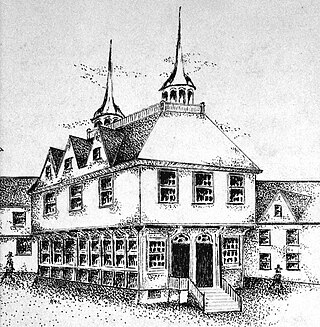
Robert Keayne was a prominent public figure in 17th-century Boston, Massachusetts. He co-founded the Ancient and Honorable Artillery Company of Massachusetts and served as speaker of the House of the Massachusetts General Court. Keayne was a prosperous London merchant who joined his fellow Puritans in Boston where he built a fortune. He was accused of unfair business practices, and brought before the legislature, the Massachusetts General Court. It found Keayne guilty, fined him, and compelled him to confess his "sins." He proclaimed his innocence, and justified his actions in elaborate detail in his will. It bequeathed £2500 to Boston, to upgrade the infrastructure with an aqueduct, relieve the city's poor, and fund the First Town-House, a grand public meeting place. He attached a condition to the effect that the bequest would become void if there were any legal actions against his estate; there were none.

The Bunch-of-Grapes was a tavern located on King Street in Boston in the Province of Massachusetts Bay in the 17th and 18th centuries. It served multiple functions in the life of the town, as one could buy drinks and meet friends, business associates, political co-conspirators. The facade of the Bunch-of-Grapes building featured an iconic sign: "Three gilded clusters of grapes dangled temptingly over the door before the eye of the passer-by."
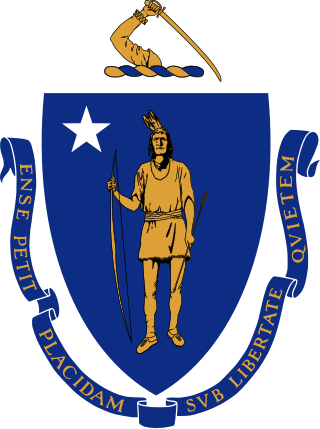
The Massachusetts Archives is the state archive of Massachusetts. It "serves the Commonwealth and its citizens by preserving and making accessible the records documenting government action and by assisting government agencies in managing their permanent records." The archives occupies quarters on the Columbia Point peninsula in Boston's Dorchester neighborhood on the University of Massachusetts Boston campus. For fiscal year 2010 the state budgeted $389,815 to the archives. The Massachusetts Secretary of the Commonwealth bears responsibility for its administration.

The 1689 Boston revolt was a popular uprising on April 18, 1689 against the rule of Sir Edmund Andros, the governor of the Dominion of New England. A well-organized "mob" of provincial militia and citizens formed in the town of Boston, the capital of the dominion, and arrested dominion officials. Members of the Church of England were also taken into custody if they were believed to sympathize with the administration of the dominion. Neither faction sustained casualties during the revolt. Leaders of the former Massachusetts Bay Colony then reclaimed control of the government. In other colonies, members of governments displaced by the dominion were returned to power.

Appleton's Pulpit is a historic landmark in Saugus, Massachusetts, United States. It is the location where Major Samuel Appleton is said to have made a speech denouncing the tyranny of Colonial Governor Sir Edmund Andros.
Samuel Appleton was a military and government leader in the Massachusetts Bay Colony and Province of Massachusetts Bay. He was a commander of the Massachusetts militia during King Philip's War who led troops during the Attack on Hatfield, Massachusetts and the Great Swamp Fight. He also held numerous positions in government and was an opponent of Governor Sir Edmund Andros.
Daniel Denison was an early settler and political and military leader of the Massachusetts Bay Colony.

















